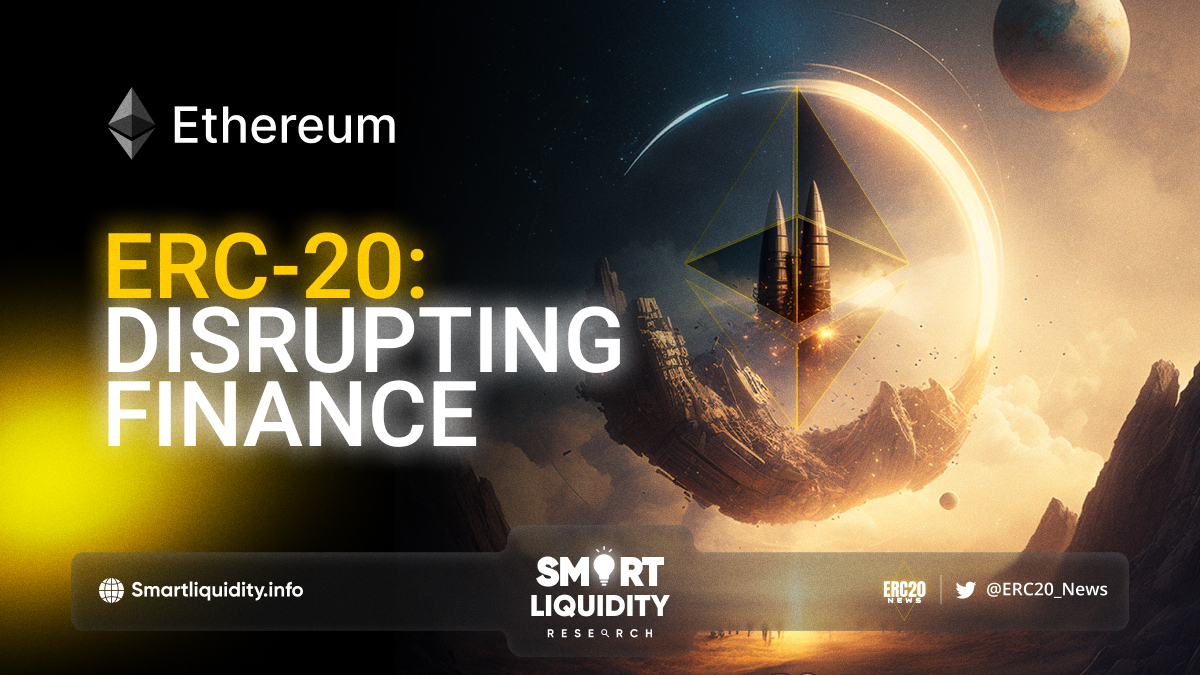From Ethereum to ERC-20: How These Tokens are Disrupting Traditional Finance


This article explores the advantages and challenges of Ethereum’s ERC-20 tokens, which represent assets of value and offer programmability, high liquidity, and security. Discover their various use cases, including ICOs, asset tokenization, and P2P lending, as well as potential growth in the DeFi and gaming industries.
Ethereum is a decentralized, open-source blockchain network that allows developers to build decentralized applications (dApps) and smart contracts. Ethereum’s native cryptocurrency is Ether (ETH), which is used as a means of payment for transactions on the network. However, developers can also create their own digital assets, known as tokens, using the Ethereum platform. These tokens are known as ERC-20 tokens.
ERC-20 tokens are fungible tokens that operate on the Ethereum network. They follow a set of standardized rules, making them compatible with other ERC-20 tokens and allowing them to be easily traded on cryptocurrency exchanges. These tokens can represent anything of value, including assets such as real estate or securities.
The Advantages of ERC-20 Tokens
ERC-20 tokens have several advantages over traditional finance. Firstly, ERC-20 tokens are programmable, meaning that they can execute complex smart contracts automatically. This makes it possible to automate financial transactions, such as payments and settlements, without the need for intermediaries.
Secondly, ERC-20 tokens are highly liquid, meaning that they can be easily traded on cryptocurrency exchanges. This allows for greater access to capital and liquidity for companies and individuals, as well as more efficient price discovery.
Thirdly, ERC-20 tokens are highly secure. The Ethereum network uses a decentralized consensus mechanism known as proof-of-work (PoW), which makes it difficult for bad actors to manipulate the network. Additionally, ERC-20 tokens can be stored securely in digital wallets, reducing the risk of theft or fraud.
Use Cases for ERC-20 Tokens
There are several use cases for ERC-20 tokens in traditional finance. One of the most popular use cases is for initial coin offerings (ICOs), which allow companies to raise capital by issuing tokens to investors. ICOs have become increasingly popular in recent years, with some companies raising millions of dollars through this method.
Another use case for ERC-20 tokens is for asset tokenization. This involves representing real-world assets, such as real estate or commodities, as digital tokens on the Ethereum network. This allows for greater liquidity and accessibility to these assets, as well as easier fractional ownership.
A third use case for ERC-20 tokens is for peer-to-peer lending. This involves individuals lending money to each other without the need for intermediaries, using ERC-20 tokens as collateral. This can provide greater access to credit for individuals who may not be able to obtain loans through traditional financial institutions.
Challenges and Limitations of ERC-20 Tokens
While ERC-20 tokens offer many advantages, there are also several challenges and limitations to consider. Firstly, the Ethereum network has a limited capacity, meaning that it can only handle a certain number of transactions per second. This can lead to slow transaction times and higher fees during periods of high network congestion.
Secondly, ERC-20 tokens are subject to regulatory scrutiny, particularly in the United States. The Securities and Exchange Commission (SEC) has stated that some ERC-20 tokens may be considered securities, which would subject them to securities laws and regulations.
Thirdly, ERC-20 tokens are vulnerable to hacks and security breaches. While the Ethereum network itself is highly secure, individual wallets and smart contracts may be vulnerable to attacks by bad actors.
Future of ERC-20 Tokens
Despite these challenges and limitations, the future of ERC-20 tokens looks bright. The continued development of the Ethereum network, including the transition to proof-of-stake (PoS), is expected to improve network capacity and reduce transaction times and fees.
Additionally, the continued adoption of blockchain technology and cryptocurrencies is expected to drive further innovation and development of new use cases for ERC-20 tokens. As more companies to explore the benefits of ERC-20 tokens, we are likely to see more creative and innovative applications of these tokens in the coming years.
One potential area of growth for ERC-20 tokens is in the decentralized finance (DeFi) space. DeFi refers to a range of financial applications that operate on decentralized blockchain networks, such as Ethereum. These applications allow users to lend, borrow, and trade digital assets without the need for intermediaries. ERC-20 tokens are well-suited to this environment, as they can be easily integrated into DeFi applications and provide liquidity and programmability.
Another potential area of growth for ERC-20 tokens is in the gaming industry. As blockchain technology and cryptocurrencies become more mainstream, we are likely to see more integration of these technologies into gaming platforms. ERC-20 tokens could be used to represent in-game items or currencies, allowing for greater interoperability between different games and platforms.
Conclusion
ERC-20 tokens are a disruptive technology that is changing the way we think about traditional finance. These tokens provide greater liquidity, programmability, and security than traditional financial instruments, and offer a range of innovative use cases that are only just beginning to be explored. While there are challenges and limitations to consider, the future of ERC-20 tokens looks bright, as blockchain technology and cryptocurrencies continue to gain wider adoption and acceptance. As we move forward, it will be exciting to see what new applications and innovations emerge in this rapidly evolving space.




